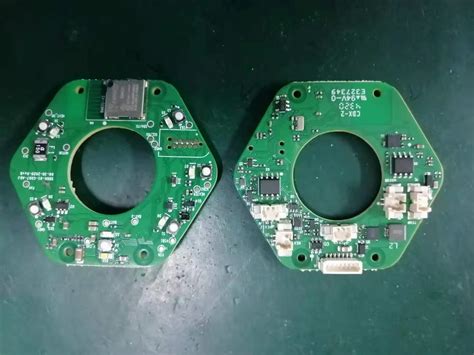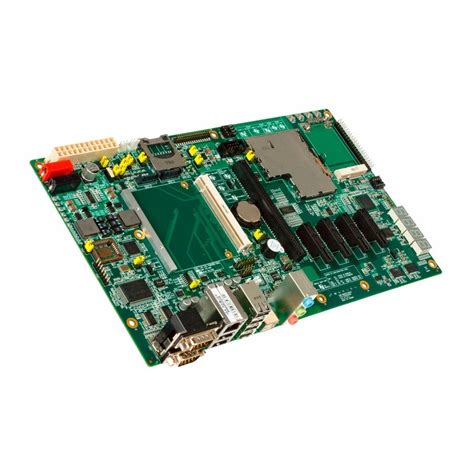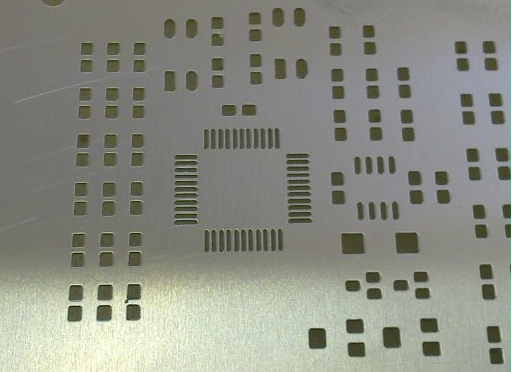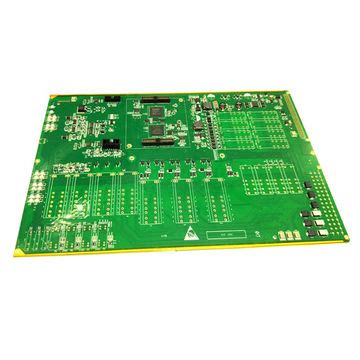Selective Soldering in PCB Assembly: Processes, Benefits, and Applications
Introduction to Selective Soldering
Printed Circuit Board (PCB) manufacturing has evolved significantly over the past decades, with selective soldering emerging as one of the most important technological advancements in electronic assembly. Selective soldering refers to a precise soldering process where solder is applied only to specific areas of a PCB that require connections, while avoiding other temperature-sensitive components or areas that have already been assembled.
This targeted approach to soldering has become increasingly vital in modern electronics manufacturing as PCBs grow more complex with mixed-technology components, high-density layouts, and sensitive devices that cannot withstand traditional wave soldering processes. Selective soldering provides manufacturers with the flexibility to handle challenging assemblies while maintaining high quality and reliability standards.
The Need for Selective Soldering in Modern Electronics
The electronics industry has witnessed several trends that have made selective soldering not just advantageous but often necessary:
- Miniaturization: As components shrink in size and PCBs become more densely populated, traditional soldering methods struggle with precision requirements.
- Mixed Technology Boards: Modern PCBs frequently combine surface mount technology (SMT) components with through-hole components, requiring different soldering approaches.
- Thermal Sensitivity: Many contemporary components (such as LEDs, sensors, and certain connectors) cannot withstand the thermal profiles of wave soldering.
- Environmental Regulations: Lead-free soldering requirements have increased soldering temperatures, making heat management more critical.
- Quality Demands: Higher reliability requirements in automotive, aerospace, and medical applications demand more controlled soldering processes.
These factors have driven the adoption of selective soldering systems that can precisely control where, when, and how much solder is applied during PCB assembly.
Selective Soldering Process Overview
The selective soldering process typically involves several key stages:
1. Board Preparation and Flux Application
Prior to soldering, the PCB undergoes cleaning and preparation. Flux is then applied precisely to the areas to be soldered. Modern systems use:
- Spray fluxing with micro-valve control
- Drop-jet flux application
- Ultrasonic flux deposition
Precision flux application is crucial as it prepares the metal surfaces for proper solder wetting while minimizing residue that could require cleaning.
2. Preheating Stage
The PCB undergoes controlled preheating to:
- Activate the flux
- Reduce thermal shock during soldering
- Minimize warping or distortion
- Ensure proper solder flow characteristics
Infrared (IR) heaters, convection systems, or combinations of both are commonly used, with temperature profiles carefully matched to the specific PCB requirements.
3. Soldering Operation
The actual soldering is performed using specialized equipment that delivers solder only to designated areas. The main approaches include:
a) Selective Wave Soldering:
- Uses a miniature wave soldering nozzle
- The PCB is moved over the wave to solder specific areas
- Suitable for high-volume production of similar boards
b) Laser Soldering:
- Uses focused laser energy to melt solder precisely
- Extremely accurate but slower process
- Ideal for very small or heat-sensitive components
c) Solder Fountain Systems:
- Small solder pots with programmable nozzles
- The fountain rises to contact the PCB at programmed locations
- Good for through-hole components
d) Robotic Soldering:
- Uses robotic arms with soldering tips
- Highly flexible for different board designs
- Can handle complex three-dimensional assemblies
4. Cleaning and Inspection
After soldering, boards may undergo cleaning (depending on flux type) and thorough inspection. Automated optical inspection (AOI) systems often check for:
- Solder joint quality
- Bridge defects
- Proper wetting
- Flux residues

Advantages of Selective Soldering
The implementation of selective soldering offers numerous benefits to PCB manufacturers:
- Component Protection: Temperature-sensitive components (such as electrolytic capacitors or plastic connectors) avoid unnecessary thermal stress.
- Higher Quality Joints: Precise control over solder volume and heat application results in more reliable connections.
- Design Flexibility: Engineers aren’t constrained by soldering process limitations when designing PCBs.
- Reduced Rework: Fewer soldering defects mean less time and cost spent on rework.
- Process Efficiency: Only necessary areas are soldered, reducing solder consumption and energy usage.
- Mixed Technology Handling: Simplifies assembly of boards combining SMT and through-hole components.
- Miniaturization Support: Enables soldering of fine-pitch components that wave soldering cannot handle reliably.
- Reduced Thermal Cycling: Minimizes the number of heat exposures for the entire assembly.
Applications of Selective Soldering
Selective soldering finds application across numerous industries where PCB reliability and precision are paramount:
1. Automotive Electronics
Modern vehicles contain hundreds of electronic control units (ECUs) with mixed-technology PCBs that must withstand harsh environments. Selective soldering ensures reliable connections in:
- Engine control modules
- Advanced driver assistance systems (ADAS)
- Infotainment systems
- Lighting control units
2. Aerospace and Defense
Avionics and military electronics demand the highest reliability standards. Selective soldering is used for:
- Flight control systems
- Communication equipment
- Radar and sensor systems
- Satellite electronics
3. Medical Devices
Medical electronics often combine sensitive components with strict reliability requirements:
- Patient monitoring equipment
- Imaging systems
- Implantable devices
- Diagnostic instruments
4. Industrial Electronics
Robust control systems for industrial applications benefit from selective soldering:
- PLCs (Programmable Logic Controllers)
- Motor drives
- Process control systems
- Power distribution equipment
5. Telecommunications
High-frequency and high-density telecom equipment requires precise soldering:
- Base station electronics
- Network switches and routers
- 5G infrastructure
- Optical networking equipment
Selective Soldering Equipment Considerations
Implementing selective soldering requires careful evaluation of equipment options based on production needs:
1. Machine Types
- Stand-alone Systems: Dedicated selective soldering machines for high-volume production
- Inline Systems: Integrated into SMT production lines for continuous flow
- Modular Systems: Allow customization for different product mixes
2. Key Features to Evaluate
- Positioning Accuracy: Typically needs to be ±0.05mm or better
- Throughput Speed: Measured in seconds per joint or boards per hour
- Solder Pot Capacity: Important for high-volume production
- Nozzle Options: Availability of different nozzle sizes and shapes
- Programming Flexibility: Ease of creating and modifying soldering programs
- Thermal Management: Ability to control board temperature during process
3. Integration Requirements
- Compatibility with existing production lines
- Software interfaces for manufacturing execution systems (MES)
- Conveyor systems and board handling
- Maintenance and support considerations

Process Optimization for Selective Soldering
Achieving optimal results with selective soldering requires attention to several parameters:
1. Thermal Profile Development
Creating the right temperature profile involves balancing:
- Preheat temperatures and duration
- Soldering temperature
- Cooling rates
- Board material characteristics
2. Flux Selection
Choosing the appropriate flux type (rosin, no-clean, water-soluble) based on:
- Solderability requirements
- Cleaning capabilities
- Reliability needs
- Environmental regulations
3. Solder Alloy Considerations
Common lead-free alloys like SAC305 (Sn96.5/Ag3.0/Cu0.5) require:
- Higher temperatures than traditional tin-lead solder
- Precise temperature control
- Potential nitrogen atmosphere to reduce oxidation
4. Process Monitoring and Control
Implementing systems to monitor and control:
- Solder pot temperature and contamination levels
- Flux deposition quantity and consistency
- Nozzle condition and solder wave stability
- Board positioning accuracy
Challenges in Selective Soldering
While offering numerous advantages, selective soldering presents some challenges that manufacturers must address:
- Process Complexity: Requires more programming and setup than wave soldering.
- Equipment Cost: Selective soldering machines represent a significant capital investment.
- Operator Skill: Technicians need specialized training to program and maintain systems.
- Throughput Limitations: Generally slower than full-wave soldering for simple boards.
- Shadowing Effects: Tall components can block access to nearby solder points.
- Thermal Management: Maintaining proper board temperatures can be challenging with localized heating.
Future Trends in Selective Soldering Technology
The selective soldering landscape continues to evolve with several emerging trends:
- Increased Automation: More sophisticated robotics and machine vision systems for self-adjusting processes.
- Smart Process Control: Integration of AI and machine learning for real-time process optimization.
- Miniaturization Advancements: Capabilities for even smaller components and finer pitches.
- In-line Quality Assurance: Built-in inspection systems that verify each joint immediately after soldering.
- Sustainable Processes: Development of more environmentally friendly fluxes and reduced energy consumption.
- Hybrid Systems: Combination of different soldering technologies in single machines for maximum flexibility.
- Digital Twin Integration: Virtual modeling of the soldering process for improved first-pass yield.
Conclusion
Selective soldering has established itself as an indispensable technology in modern PCB assembly, enabling the production of increasingly complex and reliable electronic devices. By offering precision, flexibility, and quality advantages over traditional soldering methods, selective soldering addresses the challenges posed by today’s mixed-technology, high-density PCB designs.
As electronic products continue to evolve with greater functionality in smaller form factors, the importance of selective soldering will only grow. Manufacturers investing in this technology position themselves to meet current production challenges while preparing for future requirements in electronics assembly.
The implementation of selective soldering requires careful consideration of equipment options, process parameters, and operator training, but the benefits in quality, reliability, and design flexibility make it a worthwhile investment for many electronics manufacturers. With ongoing advancements in automation, process control, and integration with other manufacturing systems, selective soldering will remain at the forefront of PCB assembly technologies for years to come.







